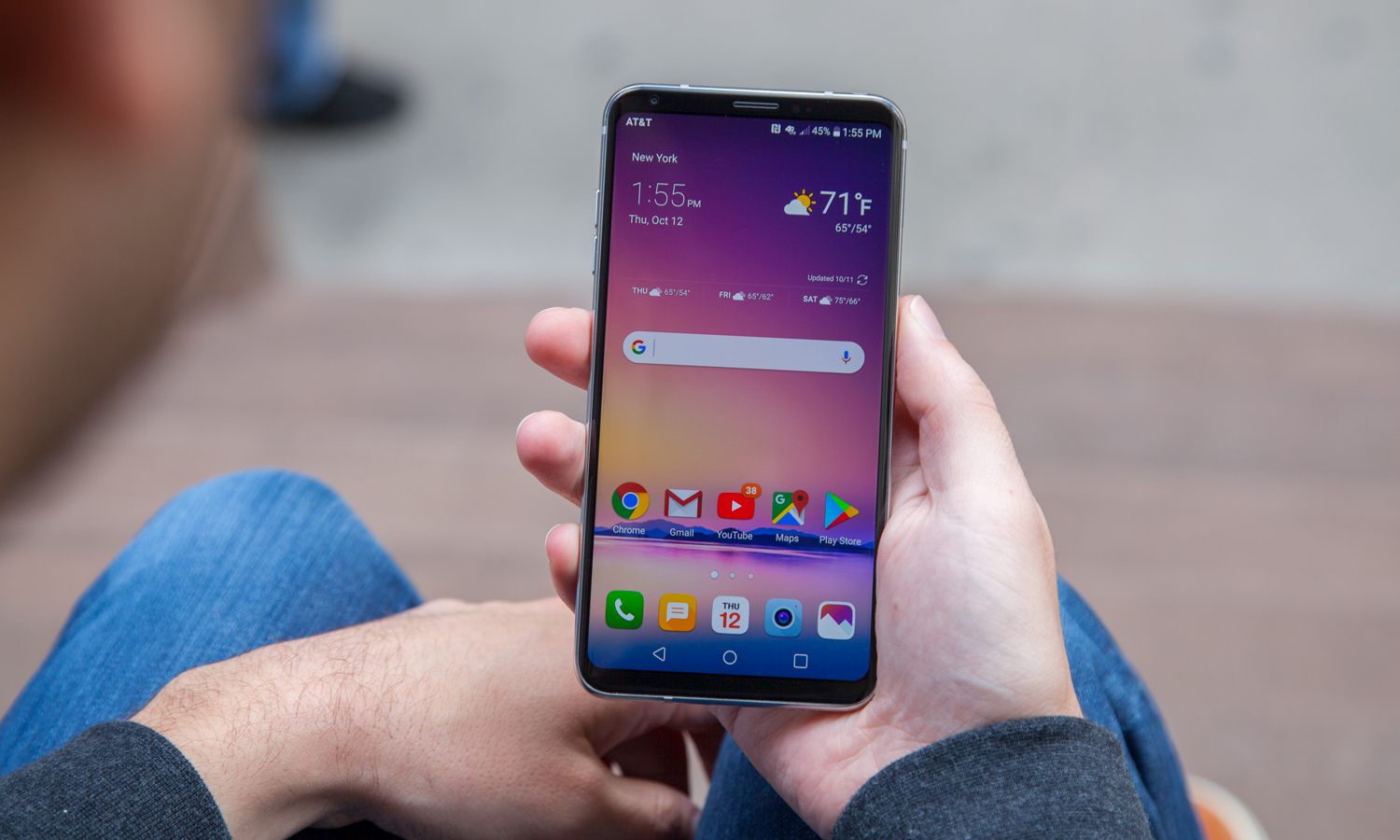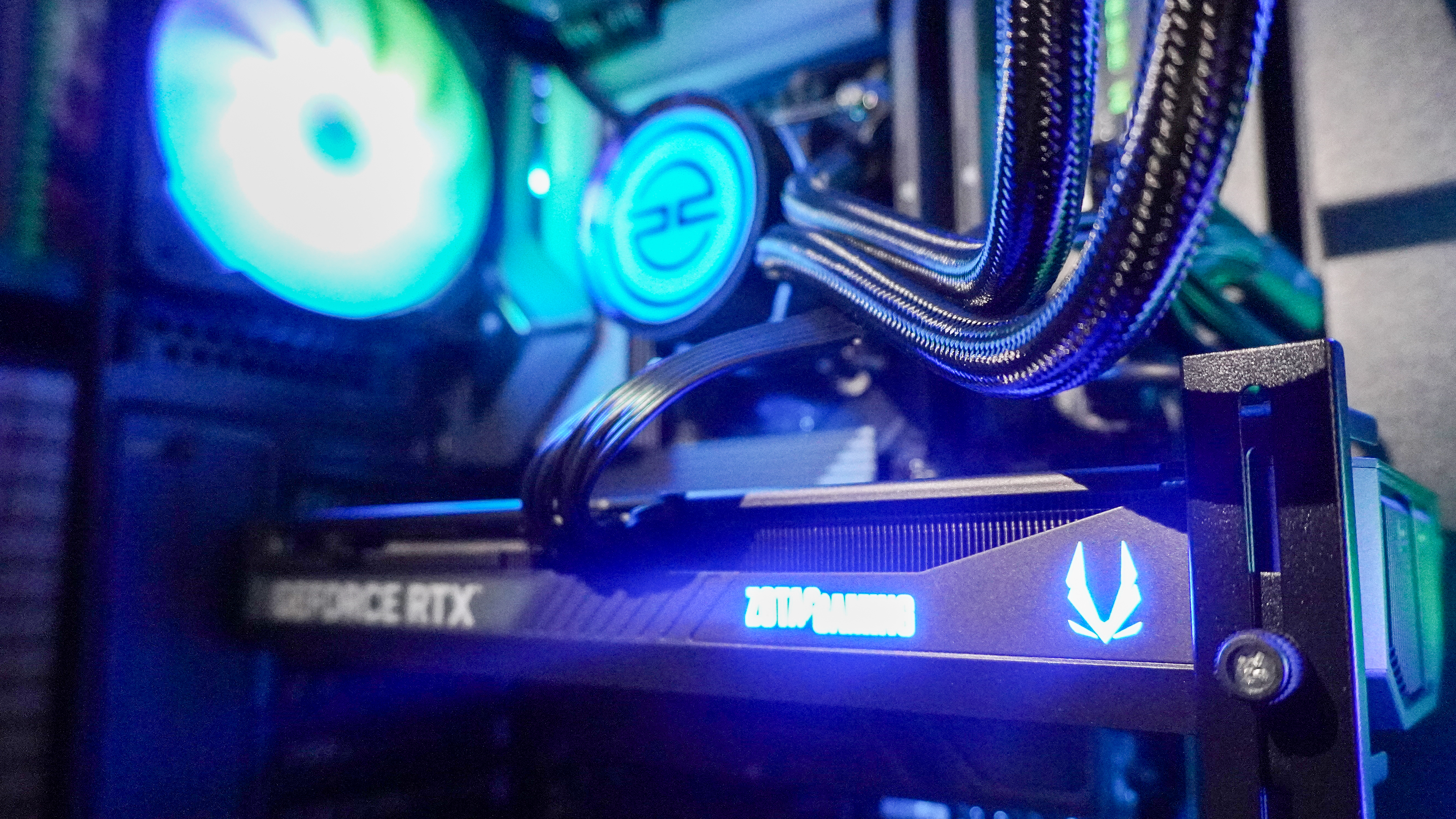Tom's Guide Verdict
The LG V30 stands out from the competition with a fun wide-angle camera, killer audio and video-creation features professionals are sure to love, but the battery life is short.
Pros
- +
Slim, light design
- +
Delightful wide-angle camera
- +
Immersive display
- +
Excellent audio from the Quad DAC
- +
Headphone jack
Cons
- -
Mono bottom-firing speaker
- -
LG software learning curve
- -
Poor battery life
Why you can trust Tom's Guide
The camera has become the defining facet of high-end smartphones, perhaps more than any other feature. New handsets are compared first on the basis of their photography skills. Breakthroughs like dual lenses and the ever-popular Portrait Mode have done an admirable job of condensing the capabilities of full-purpose DSLRs into pocket-size packages.
To that end, LG has found a winning formula with the V30. The latest flagship from LG throws everything into its cameras, and the results are impressive, even if the V30's battery life is not.
Updated May 21
We've updated our review of the LG V30 based on our in-depth smartphone drop tests. See the results below.
Price and availability
The LG V30 is available on Verizon, AT&T, T-Mobile, Sprint and U.S. Cellular, with an unlocked version coming soon. T-Mobile currently offers the phone for $800, the lowest price among all the carriers; Verizon is the most expensive, at $840. If you opt for T-Mobile, for a limited time, you can get a $500 rebate with the purchase of a second V30.
For that price, the V30 offers 64GB of storage, though LG is also offering a 128GB model — the V30 Plus — that starts at $850 and is exclusive to Sprint and U.S. Cellular. Aside from storage, the two models are identical. For this review, we tested the 64GB V30.
LG V30 Specs
| Model | LG V30 | LG V30 Plus |
| Price | $800-$840 | $850-$912 |
| OS | Android 7.1.2 Nougat | Android 7.1.2 Nougat |
| Screen Size (Resolution) | 6 inches (2880 x 1440) | 6 inches (2880 x 1440) |
| Size | 5.97 x 2.97 x 0.29 inches | 5.97 x 2.97 x 0.29 inches |
| Weight | 5.75 ounces | 5.75 ounces |
| CPU | Snapdragon 835 | Snapdragon 835 |
| RAM | 4GB | 4GB |
| Storage | 64GB | 128GB |
| MicroSD? | Yes | Yes |
| Rear Camera | 16-MP main, 13-MP wide-angle | 16-MP main, 13-MP wide-angle |
| Front Camera | 5 MP | 5 MP |
| Battery Life (Hrs:Mins) | 6:30 | Not Tested |
Design: A rounded look, refined
LG kicked off the extra-wide display trend in 2016 with its G6. For the V30, the company has refined that approach. The new device is sleeker, slimmer and lighter, with a more rounded feel and high-end finish while still maintaining IP68 water resistance.
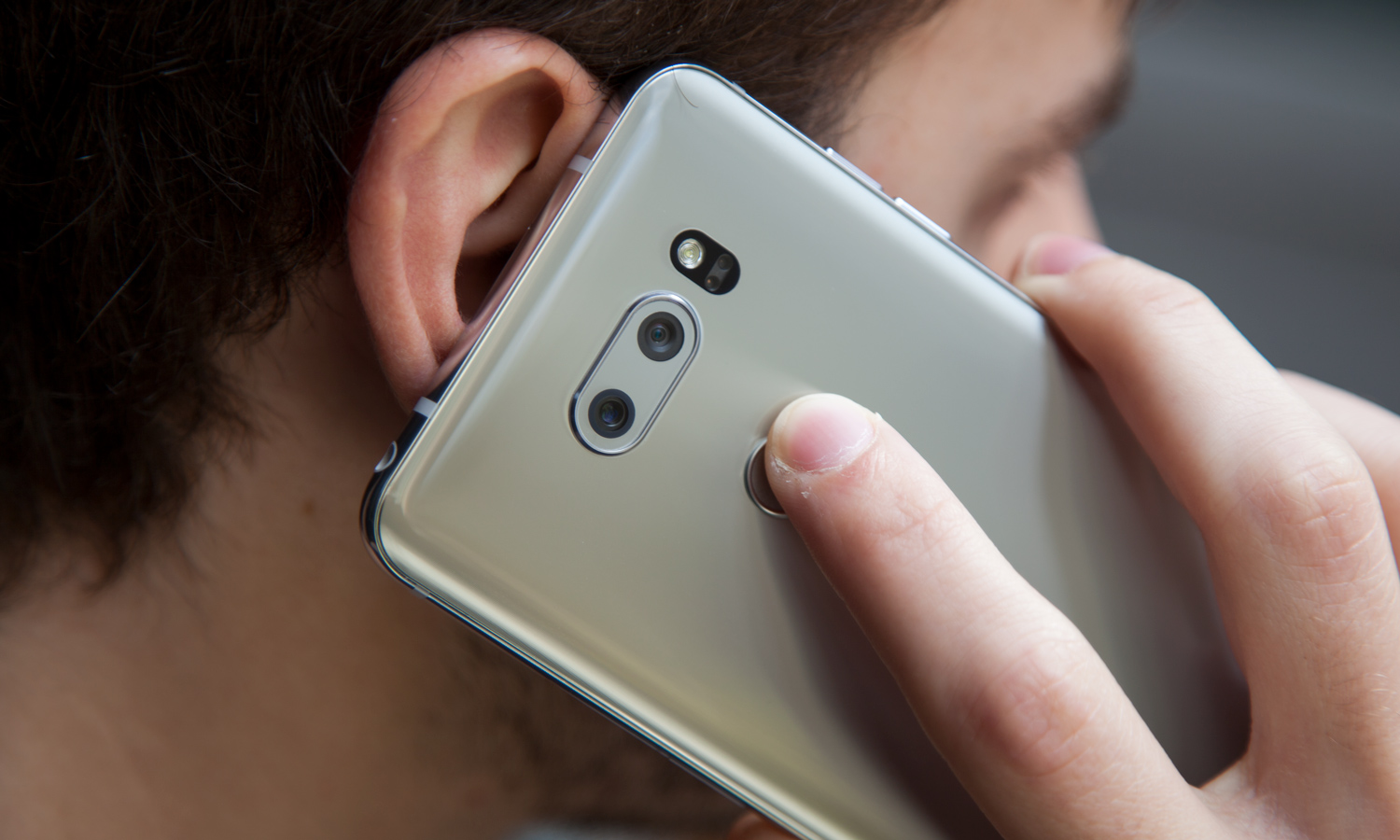
The 6-inch display dominates the front of the V30, leaving just enough space for the earpiece and selfie camera in the top bezel.
The V30 utilizes curved Gorilla Glass 5 on the front as well as the back, making the phone easier to hold than the G6 even though it's wider and longer. However, the screen itself is not curved, meaning the 5.8-inch Samsung Galaxy S8 feels much more compact by comparison.
We especially like the V30's mirrored metal-clad sides, which are a step up from the G6's chunky matte aluminum frame. And in these trying times, the significance of LG's decision to retain the headphone jack on the top-right edge is not lost on us.
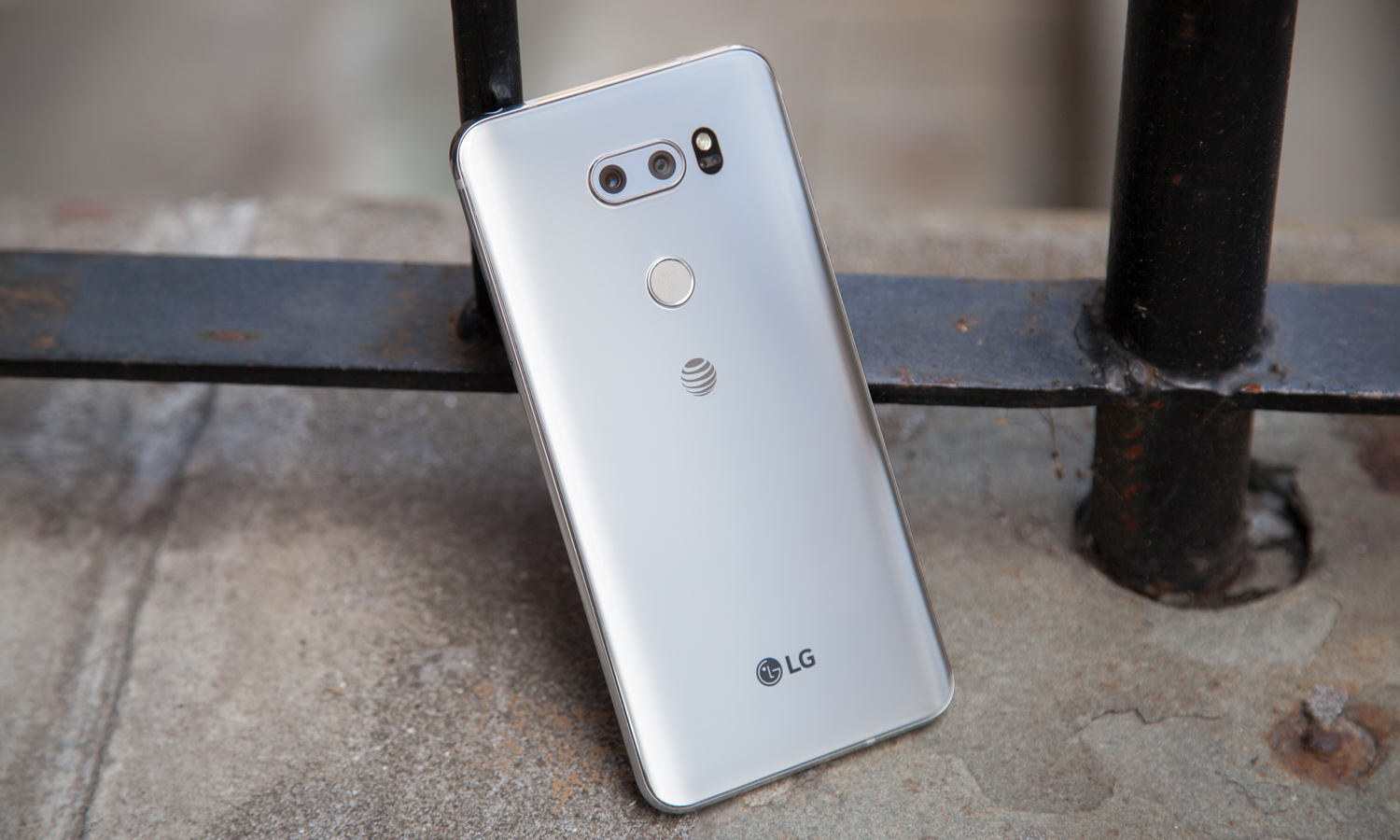
The V30's back is mostly bare aside from the horizontally mounted dual cameras and a fingerprint sensor that also functions as a sleep button. Because that key serves double duty, you won't find a dedicated power button on the side of the V30. It's an odd design choice that took some getting used to — I kept instinctively pressing down on the button with my index finger, expecting it to take me home. But at least it's easy to reach, unlike the fingerprint sensor on the Galaxy S8 and Note 8.
The V30 measures 5.97 x 2.97 x 0.29 inches and tips the scales at 5.57 ounces. On paper, that's barely lighter than the G6, which is 5.75 ounces, but it's a noticeable difference because of the newer phone's larger footprint. Meanwhile, the featherweight V30 feels almost hollow compared to the hulking 7.1-ounce iPhone 8 Plus.
Durability: High survival rate
We tested the toughness of the LG V30 by dropping it on its face onto wood from a height of 4 feet and 6 feet; we then dropped it on its edge and face onto concrete from 4 feet. We also dropped the V30 on its edge and face from 6 feet onto concrete.
The V30 survived drops onto wood from 4 and 6 feet without damage. A drop from 4 feet onto concrete on its face caused the screen to crack. Subsequent drops on its edge and face onto concrete from 6 feet caused more damage to the periphery of the display — including in front of the camera--but the phone was still somewhat usable.
The waterproof V30 also survived a dunk in the toilet, though audio was muffled afterward. It earned a pretty good toughness score of 6 out of 10. To see the results of other smartphones, as well as our complete scoring methodology, check out our smartphone drop tests.
Display: A stellar OLED screen
As polished as the design is, it's the V30's display that commands your attention. The 6-inch OLED panel, which has a resolution of 2880 x 1440, has everything you could ask for in a modern smartphone screen. Even ordinary UI elements and app icons burst off the surface with vivid colors and a crispness rivaled only by Samsung's top-line Galaxy fleet.
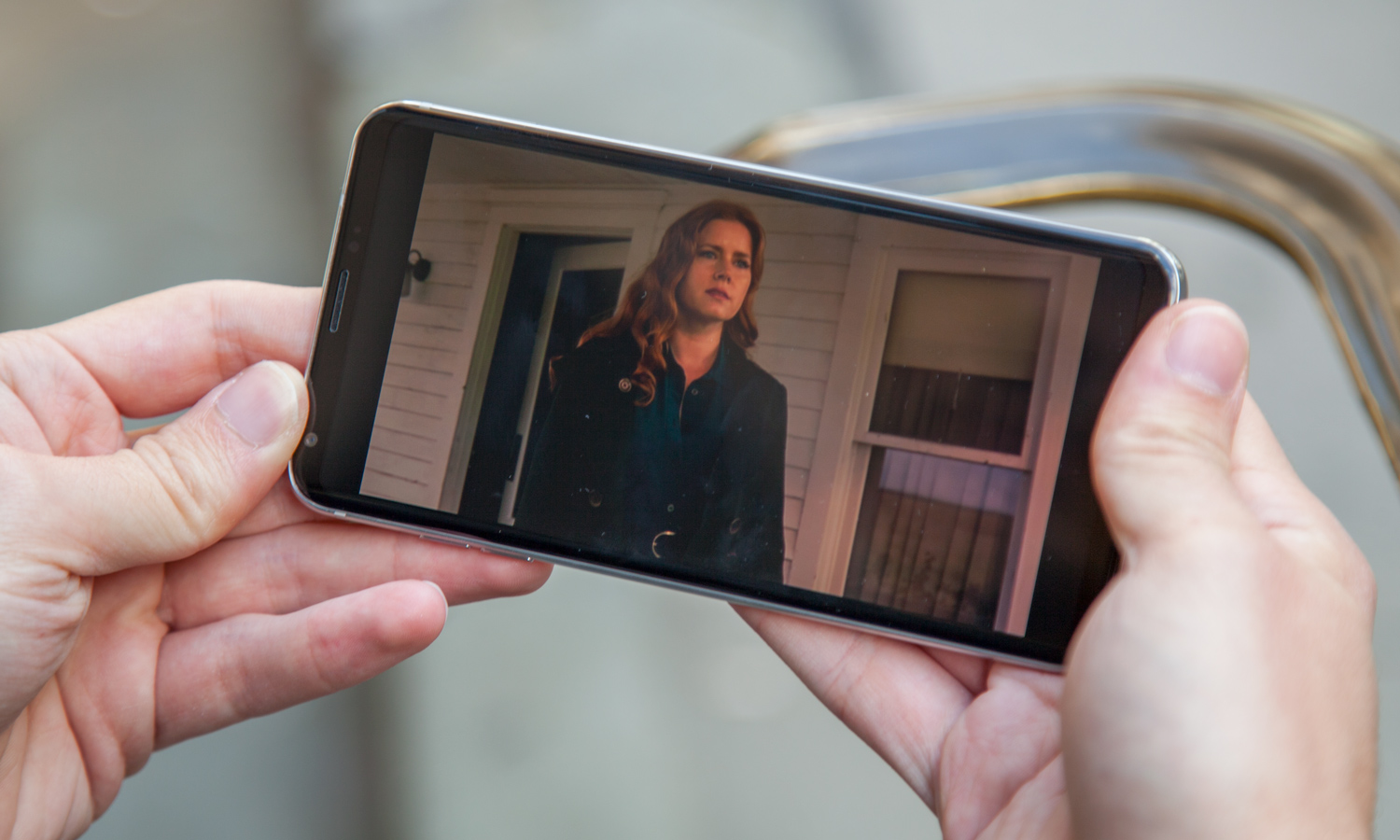
The latest Justice League trailer looked good enough — but if you really want to see what the V30 can do, fire up some HDR content on YouTube. I watched some Planet Earth-style footage of the Australian wilderness, and the V30 demonstrated the full range of its capabilities with perfect blacks, striking contrast and an impressive range of colors that deftly picked up the nuances of a sunset scene.
MORE: Where You Can Find HDR Videos for Your Phone
The V30 re-created 179 percent of the sRGB spectrum in our testing — an excellent result that was outpaced slightly by the Galaxy S8's AMOLED screen, which got 183 percent. We found the colors to be very accurate, too. In the Photo display mode, the V30 delivered a Delta-E rating of 0.26 (numbers closer to 0 are better). The Galaxy notched a 0.28 result in its equivalent setting.
The LG V30’s screen is perfectly bright, measuring at 491 nits on a light meter. The average smartphone tallies 433.
Camera: Wide-angle wonder
LG pitches the V30 as a paradise for photographers and videographers, and it all starts with the phone's dual cameras. The main 16-megapixel lens has an f/1.6 aperture — the largest aperture of any phone ever — as well as optical image stabilization, and laser and phase detection autofocus. The secondary 13-megapixel wide-angle lens boasts an f/1.9 aperture and a 120-degree field of view. On the front, there's a 5-MP shooter that you can switch from 80 to 90 degrees, depending on how wide you want your selfies.
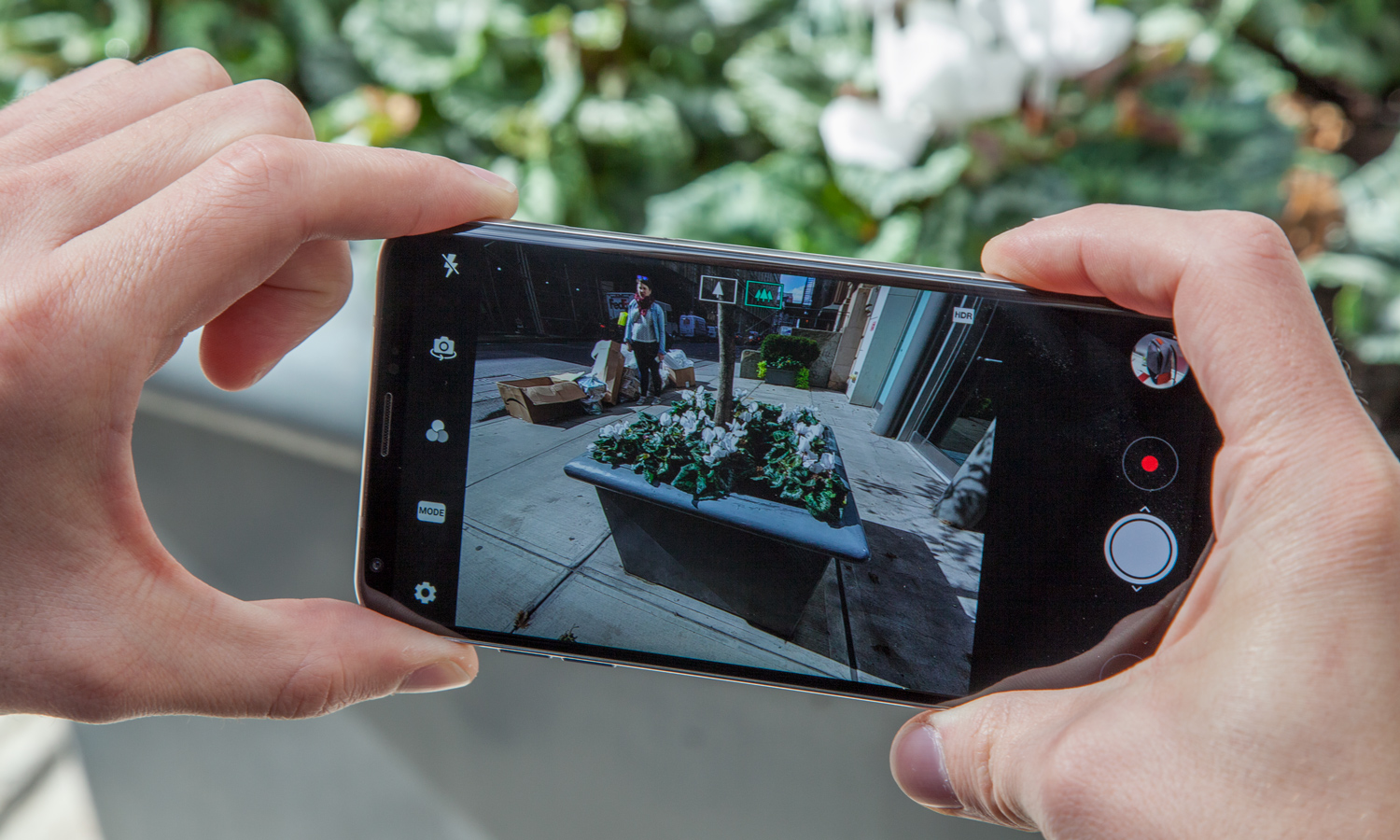
That wide-angle lens means that just as with the G6 before it, you use the V30 differently than you would most dual-camera smartphones. While the likes of the iPhone 8 Plus and the Galaxy Note 8 can pull off depth-of-field effects in Portrait Mode by combining information from both cameras, the V30 doesn't have such a feature. You can toggle between the standard and wide-angle lenses, but that's it.
The above shots were taken on our rooftop during a crisp fall afternoon in New York — once with the V30, and again with the Galaxy S8, both times using HDR. The LG's vivid colors immediately leap out, but the differences in contrast are even more remarkable. The Galaxy preserved more detail in the darker areas of the shrubbery, but the V30 more realistically exposed the background, particularly in the shadows falling on the buildings toward the left.
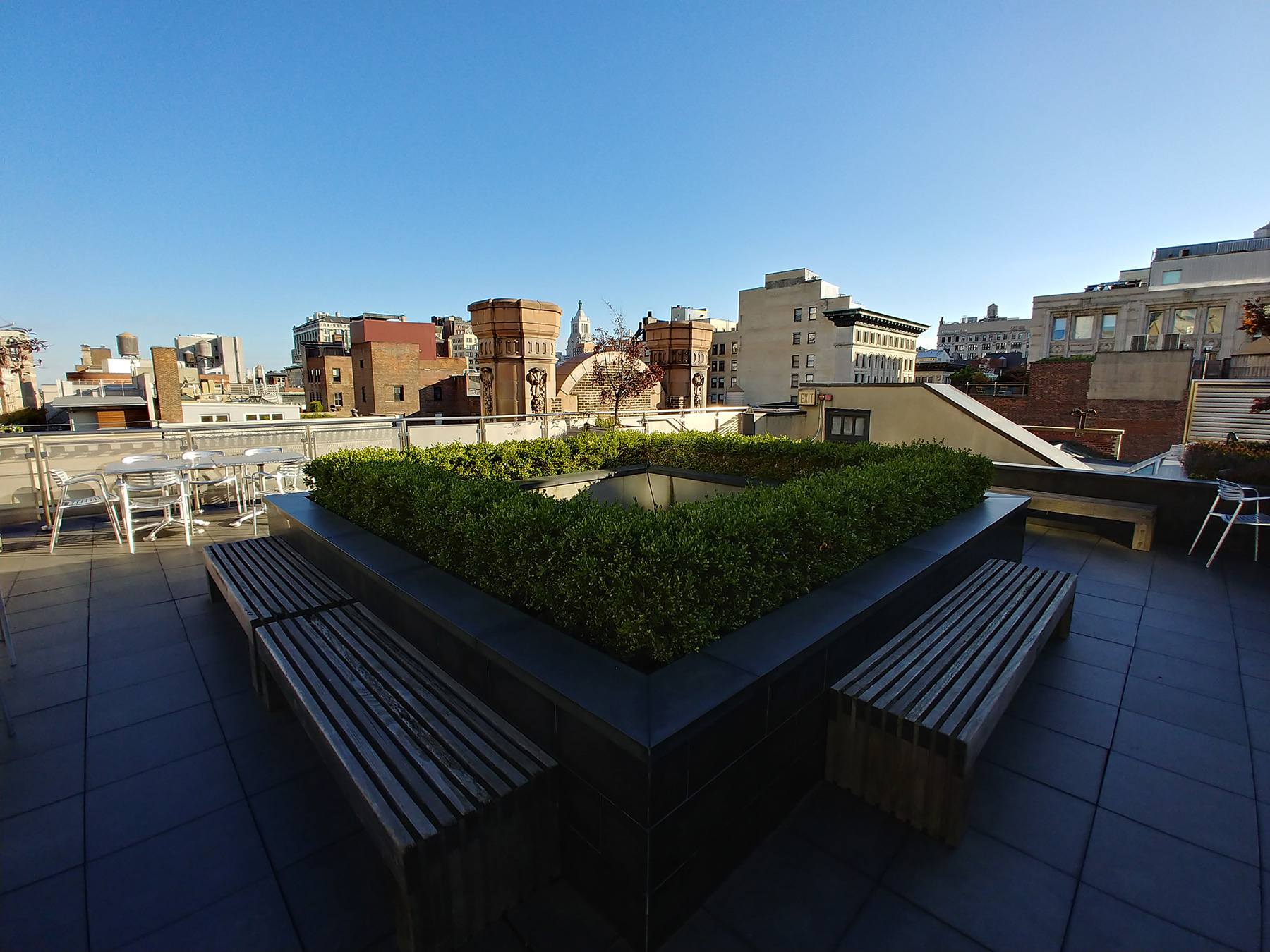
A little later, I returned to our roof, but this time with the wide-angle lens. You might prefer the Galaxy S8's performance in our previous comparison; both cameras are excellent, and it really comes down to taste. But no smartphone, save for LG's own G6, can offer this vantage point. There's certainly a slight dip in overall sharpness, but the unique perspective breeds creativity and makes the V30 tremendously fun to shoot with.
When it was time to compare selfies, the Galaxy S8's 8-MP front-facing camera produced a warm, vibrant portrait with a subtle blur of the background. Skin toning was switched off on both phones, but the Galaxy was still a little overaggressive with its smoothing. Meanwhile, the V30 delivered a shot that was much sharper overall, with more realistic colors.
Finally, I took the V30 indoors to see how its low-light performance stacked up against that of our favorite camera phone, the iPhone 8 Plus. Here, the LG's larger aperture really came into play, exposing the foreground of the scene in much brighter tones than the iPhone could. However, the V30's shot still ends up feeling flat by comparison, particularly in the middle of the frame, where Apple's camera picked up the sepia light emanating from the shelves and darker wood grain in the cabinets. Technically speaking, the V30's rendition might be more balanced, but the iPhone produces the more dramatic scene.
Since our review, LG has released a software update for the V30 that adds image-recognition features introduced in a separate version of the phone called the LG V30S ThinQ. (Those same features appear in the newly released LG G7 ThinQ.) The phone's camera can now tap into artificial intelligence to recognize objects and adjust photo settings on the fly.
Video and Audio: Calling all content producers
The V30 equals its Android rivals with its ability to shoot 4K video at 30 frames per second, or slow motion, 240 fps video at 720p. Straight away, you'll note that can't compare to either the iPhone 8 or the 8 Plus, both of which can handle 4K at double the frame rate while capturing 240 fps at 1080p.
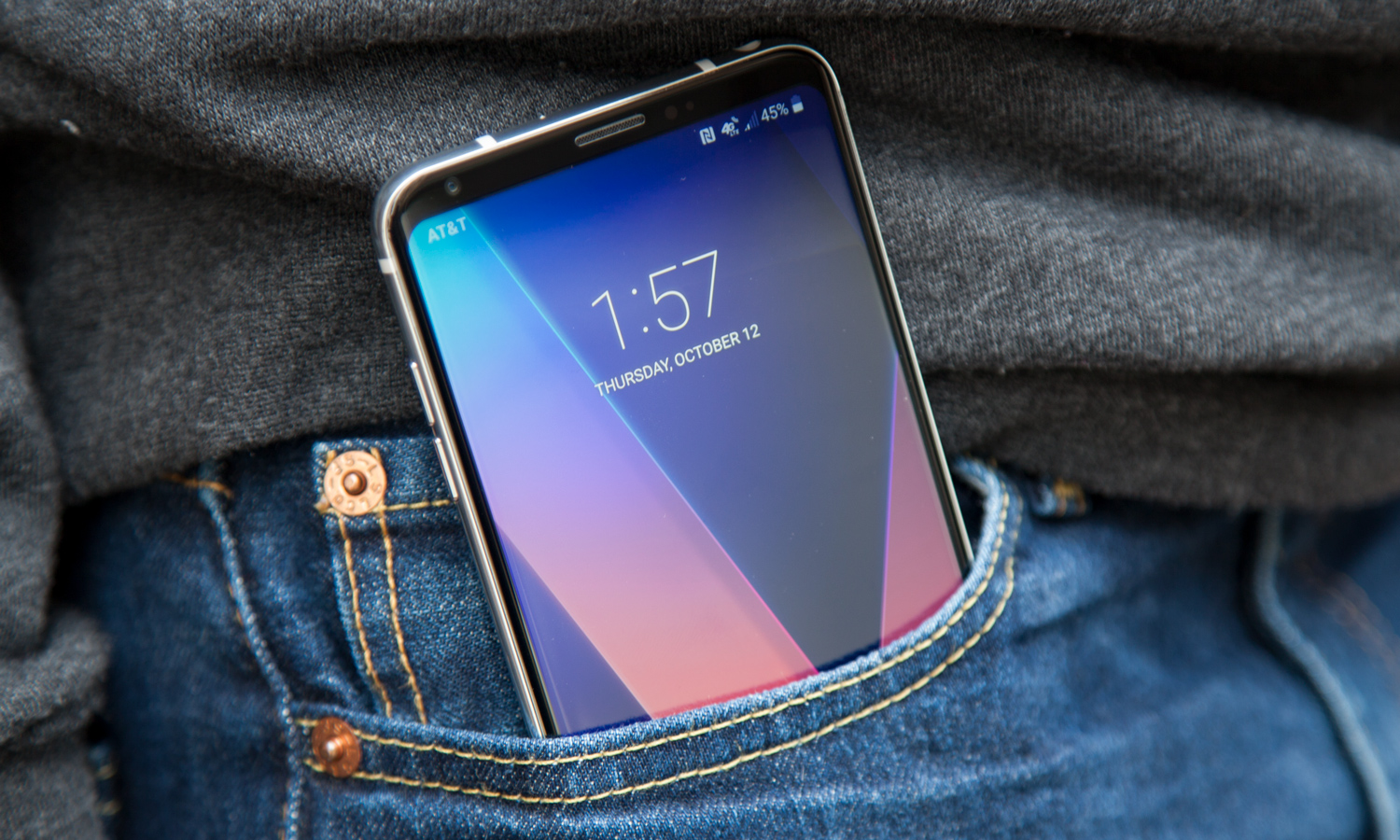
Despite those shortcomings, LG still declares that the V30 delivers studio-quality video on a par with feature films. That’s a result of the phone's suite of effects, housed in a collection called Cine Video. There, you'll find 16 filters, ranging from Thriller to Romantic Comedy (used below), that look more convincing than those on other handsets. The company enlisted the expertise of colorists from Hollywood studios to develop Cine Effects. More important, the effects are effortless to use: Simply apply one and start filming, and you'll see the filter work its magic in real time as you record.
There's also Point Zoom, where you can zero in on a particular area of the frame, rather than zooming into the center and having to physically move the device. It's a neat effect, but if your subject is staring at the camera, they'll definitely end up looking like Jim in a rerun of The Office.
The 6-inch OLED panel has everything you could ask for in a modern smartphone screen.
Experts will likely appreciate the Cine Log feature more. In this mode, the V30 can capture videos in Log, the format used by professionals to capture a wider dynamic range during filming, and then perform all the colorization afterward using software like Adobe Premiere.
The V30 supplements its video capabilities with improved audio, thanks to the use of a 32-bit quad digital-to-analog converter. The DAC is designed to produce richer, distortion-free sound by outputting an analog signal derived from the digital source media. It made a noticeable difference, even when I used a pair of ordinary 3.5-millimeter Apple EarPods. I played Radiohead's "Packt Like Sardines in a Crushd Tin Box" for its booming bass and chirpy synths, and the V30 navigated the dynamic soundscape with a fullness that was muddied over when I moved to an iPhone 7.
The quad DAC is active only when headphones or external speakers are connected, and unfortunately, LG opted for just one bottom-firing speaker for the V30. That means you can expect muffled audio depending on how you hold the phone — a disappointing design choice that contradicts the V30's cred as a media powerhouse.
Battery: Disappointing results
The V30 has a sizable 3,300-mAh battery, and supports wireless charging through both Qi and PMA standards. It also features Qualcomm's Quick Charge 3.0 protocol, which can replenish power up to four times faster than standard charging. It's not Qualcomm's latest tech — Quick Charge 4.0 has since been introduced — but it's still quite efficient.
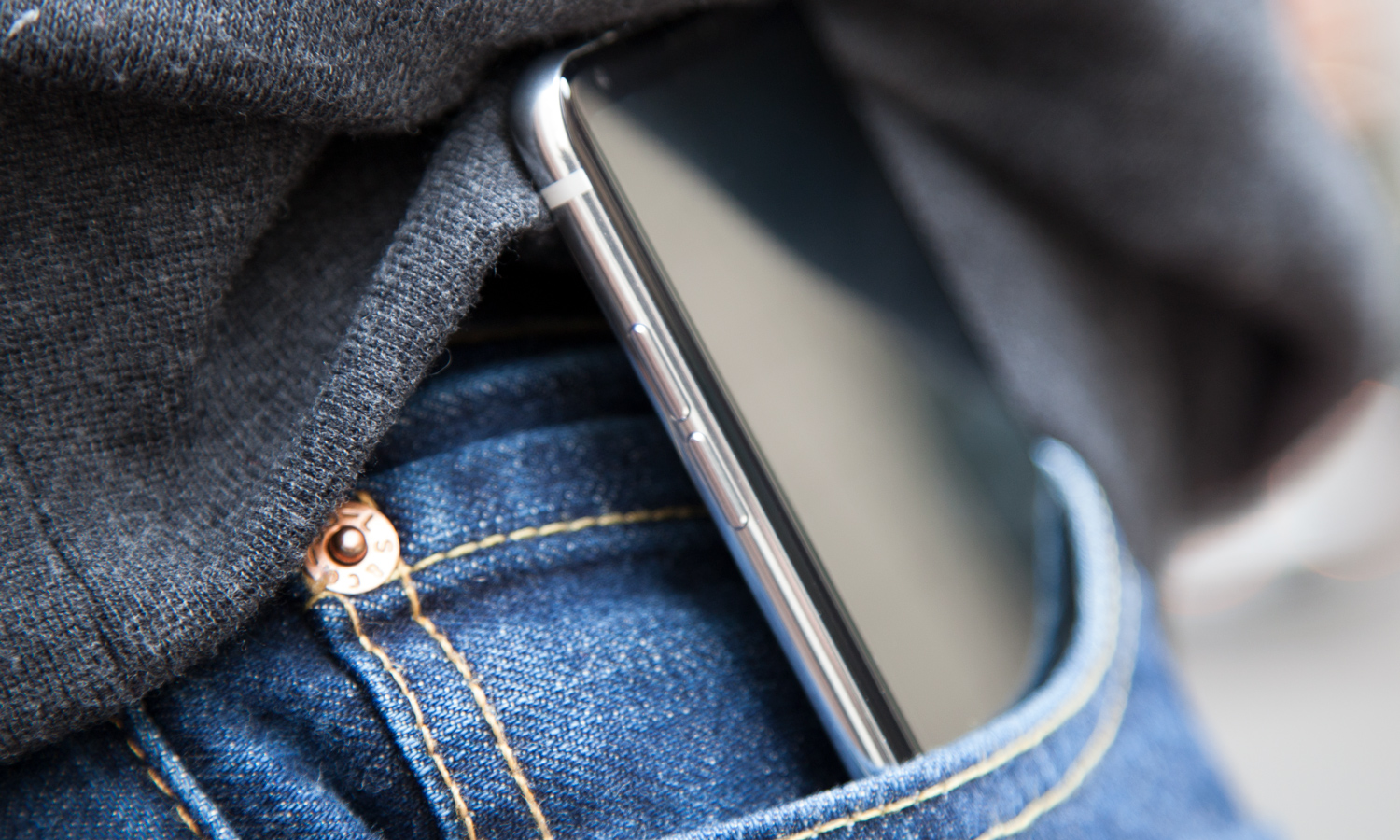
Given the battery's size, we expected the V30 to deliver at least average longevity. However, the phone fared poorly on our Tom's Guide Battery Test (continuous web surfing over AT&T's LTE network). The V30 delivered just 5 hours and 57 minutes before powering down, prompting us to run the test a second time. At 6 hours and 30 minutes, it still fell far short of the current 9:40 smartphone average. Even the Galaxy S8, which sports a smaller, 3,000-mAh battery, still managed 10 hours and 39 minutes.
The wide-angle lens breeds creativity and makes the V30 tremendously fun to shoot with.
We’re not sure why the V30 fell so short of expectations. When we reached out to LG about our results, the company suggested checking assorted settings that could be impacting battery life, such as Bluetooth or whether the Always Listening feature for Google Assistant was enabled. We plan to try adjusting some of these settings in additional battery tests to see if there’s any impact on the V30’s battery life; we’ll update the review if we see an improvement.
Performance: On a par with the Galaxy S8
At the heart of the V30 is Qualcomm's Snapdragon 835, the same processor featured in the Galaxy S8, S8 Plus and Note 8, as well as the HTC U11 and OnePlus 5. It's paired with 4GB of RAM. As a result, the V30 didn't leave us wanting more power in our tests.
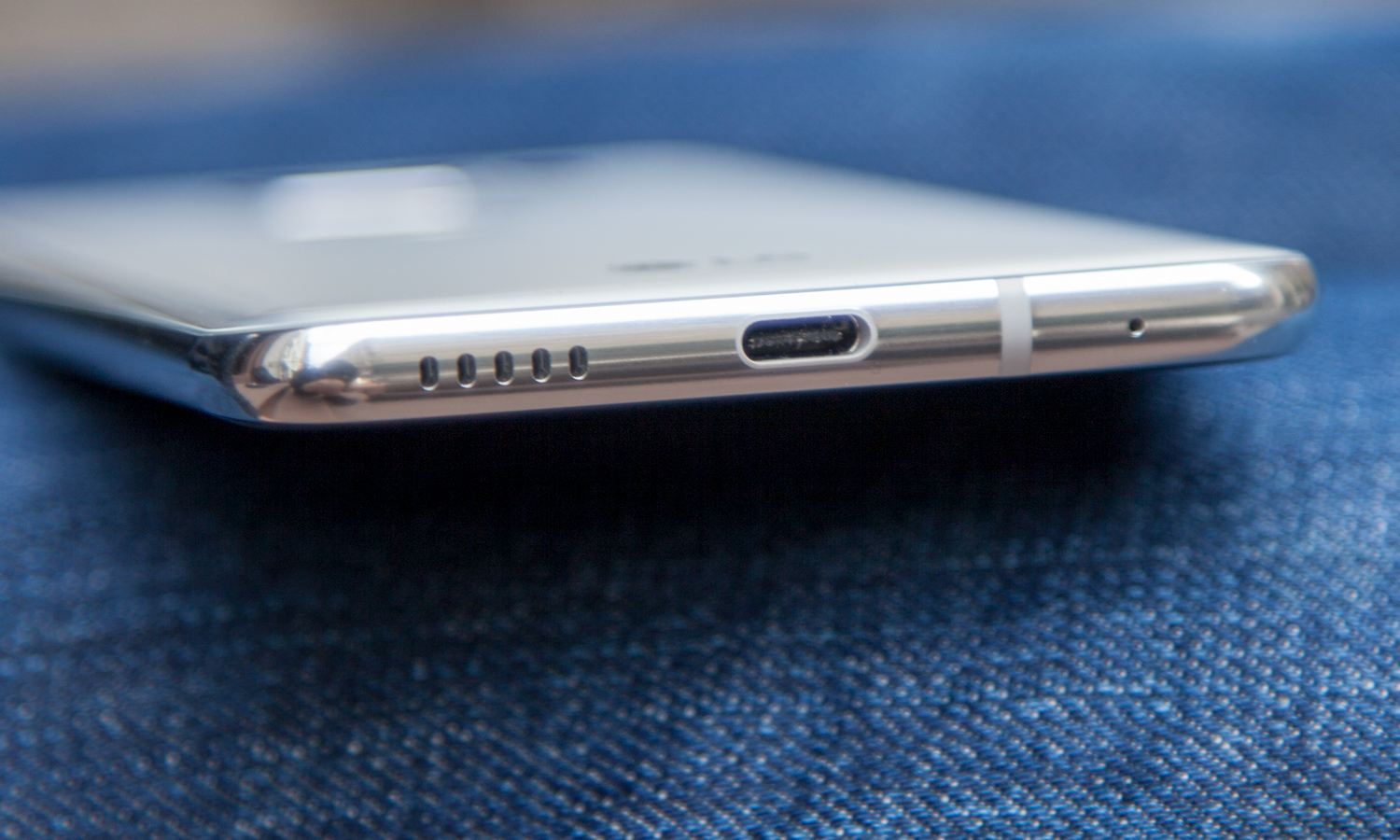
The V30 effortlessly knocked off every task we asked of it. Thumbing through Facebook in multiwindow mode alongside YouTube was no trouble, and the device didn't break a sweat while playing graphic-intensive superhero fighter Injustice 2.
Results from the benchmarks affirmed our positive impressions. With a Geekbench 4 score of 6,131, the V30 fell just shy of the Galaxy S8's 6,295, and it was farther off the Note 8's mark of 6,564. Given that the Note 8 has 2GB more RAM than the V30, though, that result wasn't surprising.
The V30's display is so roomy already, I found little purpose for the new Floating Bar feature.
However, graphics performance was a different story. The V30 flipped the script against its two rivals, posting a 3DMark Ice Storm Unlimited score of 40,260. That just edges out the Note 8, at 39,834, and is considerably better than the Galaxy S8's result of 35,903.
Unfortunately, as fast as the V30 is in a race against its Android-powered rivals, the iPhone 8 and 8 Plus still smoke it, thanks to Apple's A11 Fusion CPU. Even the smaller of Apple's new handsets delivered an astonishing 10,170 on Geekbench 4, and 62,532 on Ice Storm Unlimited, despite carrying half the RAM of the V30.
Software: A different flavor of Nougat
Out of the box, the V30 runs Android 7.1.2 Nougat, with LG's custom skin layered atop the experience. While Android is usually well enough left alone, and LG's tweaks starkly differ from the stock software, they don't really detract from the ease of use or the design.
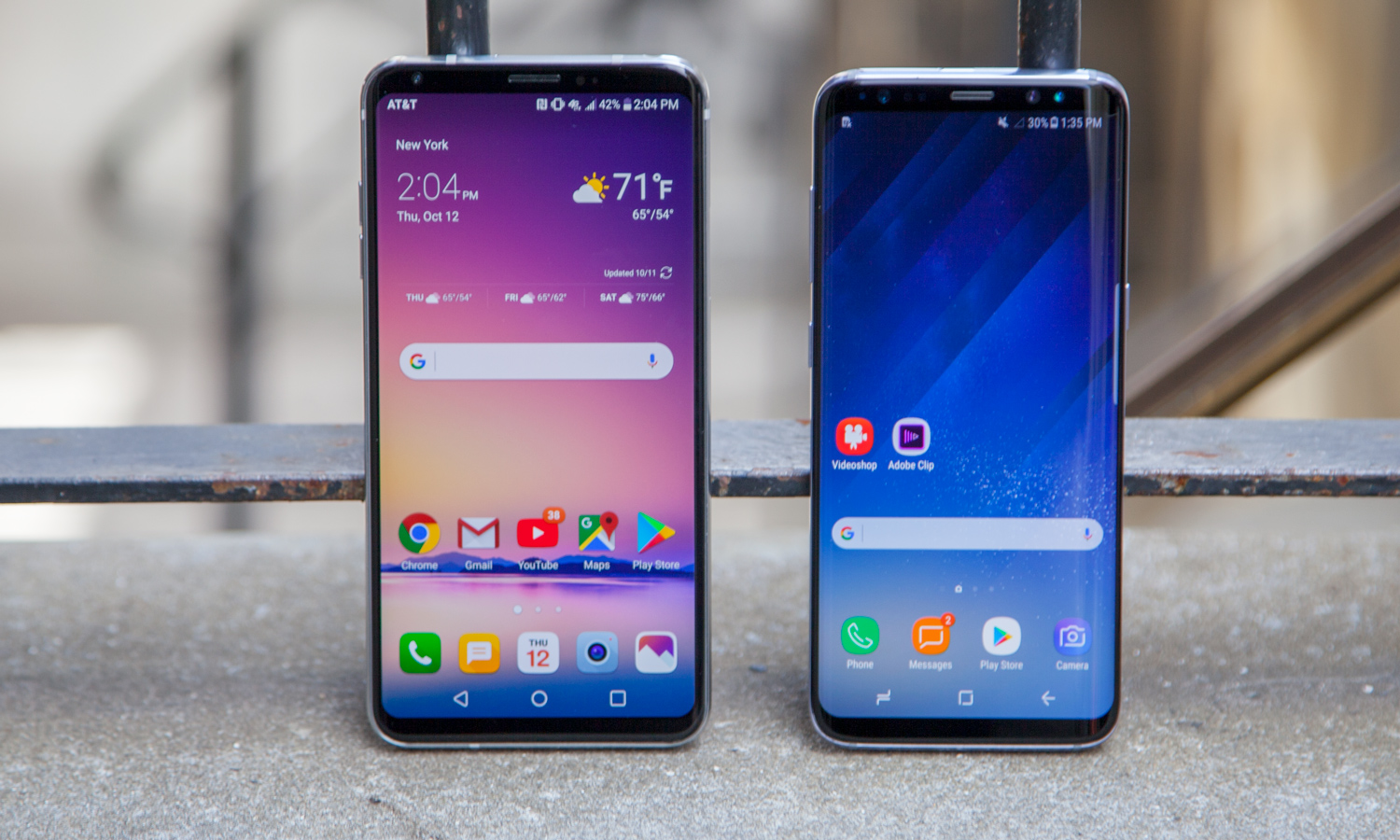
The most noticeable change in terms of LG's house rules is the way apps are stored. The V30's home screen doesn't contain an app drawer, so everything you download lives right there — similar to how Apple's iOS operates. Of course, you still have the ability to package apps in folders, and LG gives you a couple of useful options if you'd like to customize things, like page-swiping animations, wallpaper scrolling options and the ability to make your screens loop continuously.
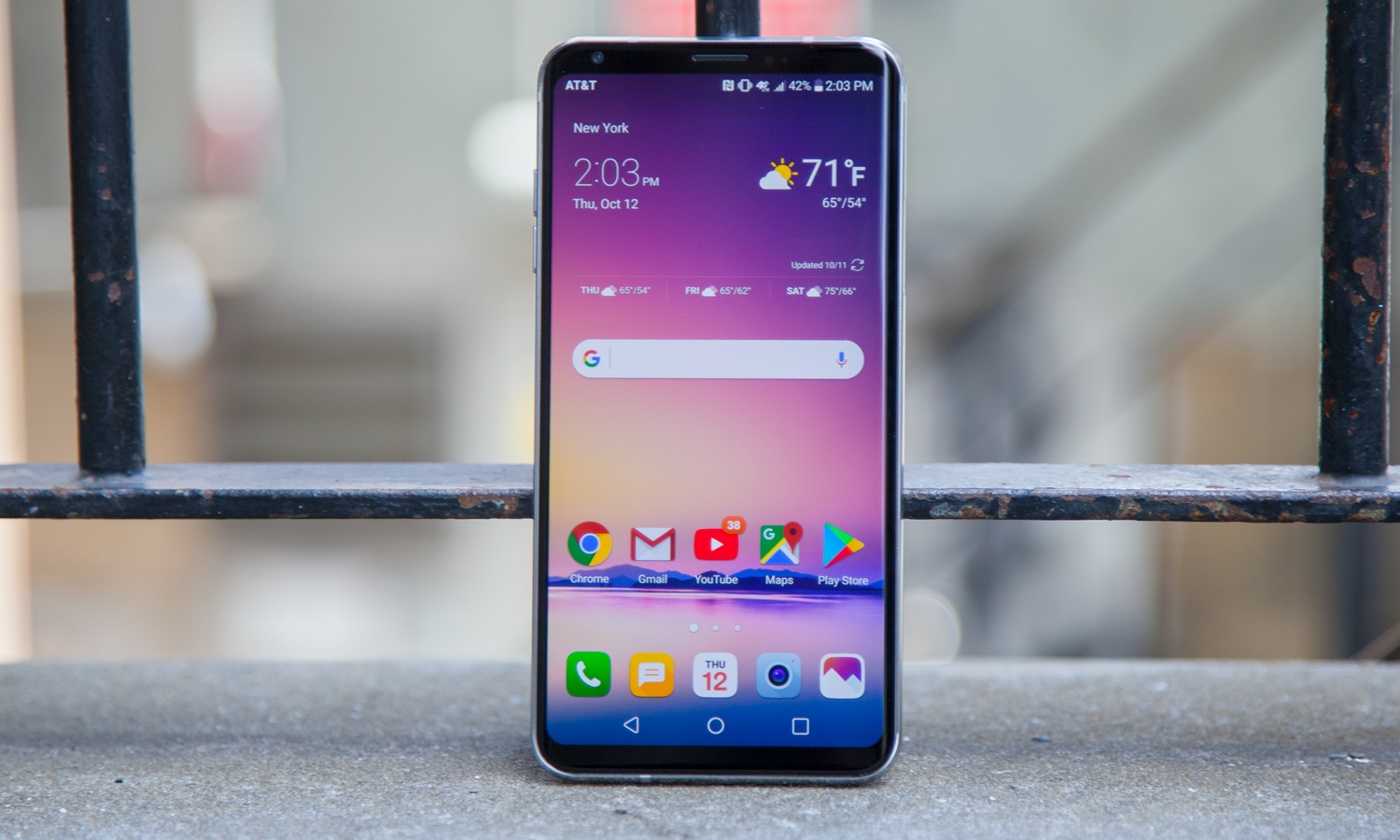
Those enhancements extend to a new feature for the V30 that's designed to mimic the secondary "ticker" display that was a defining feature of LG's previous V Series devices. The new look is called the Floating Bar, and it operates similarly to Apps Edge on the Galaxy S8 and Note 8. A flyout menu that lives persistently on the side of the screen reveals additional shortcuts when tapped. You can change the apps stored there, and move the menu up and down along the left or right bezel.
Some will surely find the Floating Bar useful, but the V30's display is so roomy already, I found little purpose for it. LG has condensed a lot of functionality into this very small strip, and that makes it a bit of a pain to use. You can even stash music controls in there if you're so inclined, but that's something probably better left for the notification shade.
Bottom Line
There's so much to like about the LG V30. And while it doesn't necessarily eclipse the best hardware from Apple, Google or Samsung, it provides an excellent alternative if those other flagship phones fail to grab you.
The V30 is a smartphone for very discerning customers. Content producers will appreciate the V30's high-quality video filters and unrivaled wide-angle lens. Audiophiles will love the way quad DAC makes everything sound a little bit better. Film buffs will be right at home with the display's wide gamut and superb color accuracy. Still, it's not a slam dunk. The camera is certainly among the best, though not necessarily perfect for all situations. Its low-light performance lacks some punch, and if you're looking for Portrait Mode, you'll be sorely disappointed.
Faithful Android users won't like the liberties LG has taken with Google's dependable OS. And of course, there's the short battery life, which remains an issue on our test unit. But ultimately, the V30 does enough to differentiate itself in the crowded arena of flagship smartphones, and that makes it worth your attention.
Credit: Shaun Lucas/Tom's Guide
Adam Ismail is a staff writer at Jalopnik and previously worked on Tom's Guide covering smartphones, car tech and gaming. His love for all things mobile began with the original Motorola Droid; since then he’s owned a variety of Android and iOS-powered handsets, refusing to stay loyal to one platform. His work has also appeared on Digital Trends and GTPlanet. When he’s not fiddling with the latest devices, he’s at an indie pop show, recording a podcast or playing Sega Dreamcast.
-
jinghuiwee Are you sure it had poor battery life ? Because from customer who owns and reviewers who used the v30 had said that the v30 has the best battery life out there surpassing all the other flagshipReply -
alexburnettmusic I think they must have ended up a faulty handset for this review because the LG V30 has been getting stellar reviews on its battery life in every other review I've read as well as from users. Here are just two examples, the first being a battery test where it lasted 9h 34 min, a whole 3 hours longer than in this review (which is why I am sure it must be a fault with that specific unit they were testing): https://www.phonearena.com/news/LG-V30-battery-life-score-is-out-big-improvements_id98896 http://www.techradar.com/reviews/lg-v30/3Reply -
Kenneth_79 I had 2 LG G3s and a G4. All lived short lives. I don't trust LG's hardware and will not make that mistake again.Reply -
dusanzogovic OK. Every single time SONY is out of scope.. WHY?Reply
XZ Premium has the same machine from May 2017, and you are just talking about Samsung.. What about iPhone 8? Huawei?... -
gusda9 The Huawei mate 9 has the longest lasting battery out there I have it and it's totally amazing two days without a charge 4000 milliamp battery one of the largest if not the largest battery in the phoneReply -
funbit Poor battery life? You're kidding, V30 lives longer than any other device I've ever used. There're many proof videos on Youtube too.Reply -
lawrencemannino Got to agree with the others here - I've had the v30 for four days now and am a pretty heavy user - definitely the best phone I've ever had in terms of battery life while shooting the heck out of video and streaming - actually charging every other day so far. Also, regarding the camera, I think it's important to also mention the remarkable depth of the manual video and still settings which in my experience more than make up for the perceived shortcomings mentioned above. Also, surprised you didn't mention the graphy functionality, which is surprisingly useful for those unfamiliar with manual modes. Big fan of Tom's for a long time but, with respect, find this particular review to be a little shallow and missed out on quite a bit of additional features that content producers and anyone who wants a great phone should consider - my 2 cents.Reply -
blueprintsrecords Basically good review though as a V30 owner I’m not sure I understand the complaints about the battery. I give this thing a workout and compared to my iPhone X the battery on the LG is a beast. I get great battery life. Everything else is as good as I’ve ever seen on a smartphone. I have to have an iPhone for work email and I am very impressed with the X but if I had to choose I’d go with the V30 (and the LG watch sport I paired w it).Reply
I’m using AirPods with the Google Assistant app and it works well. Much better than Siri. Connectivity on the V30 is much faster and the ace in the hole Quad DAC sounds amazing. It looks good, is lightweight but very solid and feels good in my hands. Perfect screen size, bigger than the iPhone makes reading and watching video much better. I love it!
